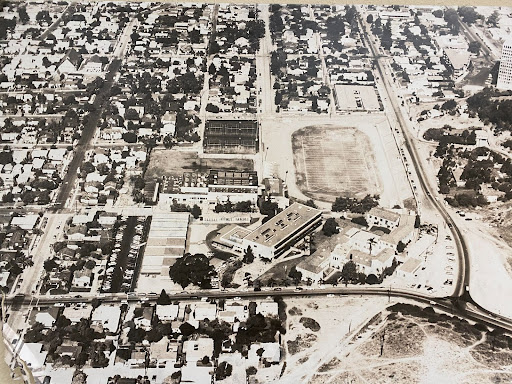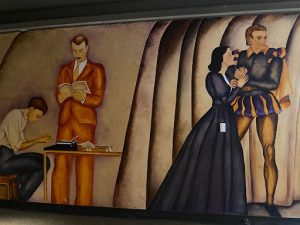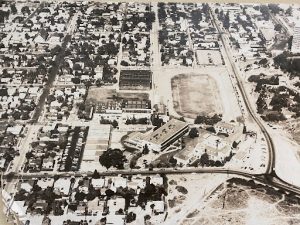La Jolla High School in 1922
La Jolla High School stands as the second oldest campus in the San Diego Unified School District.

Photograph property of La Jolla High School
October 21, 2021
In the year of 1922, La Jolla High School first opened its doors to the students and staff. It stands as the second oldest campus in the San Diego Unified School District. This was the start of a long lasting legacy of the Vikings, the school’s mascot, that has continued to this very day, 100 years later.
La Jolla High School holds the past of the people who have come before. A notable person would be Ms. Lecren, a teacher at the school for the past 25 years. “The school has always been everything you would expect from a highschool. It has good kids and bad kids. It has sports and academics, parents who care, a town who cares, and people who have gone here have a very strong attachment to the school.” After the changes and development of the past century, the one thing that remains the same is the fondness of the Viking carry of the school. Mr. Frank, an alumni of the school from La Jolla High in 1990, has been coaching for 26 years and teaching for 23 years. “The cool thing about La Jolla High School is that it’s such a small community and such a tight knit community you know it’s a family atmosphere.” The high school only had three years as a sophomore (10th), junior (11th), and senior (12th). The school is 12 acres long with modern day accommodations. It has numerous buildings and has been renovated throughout the years. Unlike the past, it has 1,400 students today. Long ago, there was only one main building with barracks, a building to house soldiers, behind it. In order to have a full school, people from neighboring high schools-Pacific Beach and Mission Beach-would travel to make up for the amount of students. The first school bus was parched by the Viking 1926 speed wagon. This was used for sports games, which was always very popular, and student transportation. Starting in the 90s, the buses became more used. When the number of buses rose, the school added a more diverse group of students.
In 2003 the pool was built and in 2001 turf in the football field was added. In the early history of the school, sports were primarily for boys. Football, basketball, cross country, tennis, baseball, swimming, and track have been dated back since the beginning of school history. People would play sports all year round, joining a new sport every season. The girls did not have sports teams until Title 9 Act 1972, stating equal rights for men and women. Before then, girls had formed groups, even though they did not count towards the California Interscholastic Federation (CIF). The school colors, scarlet and black, came to be when the San Diego University donated old uniforms. Finally, boys and girls were required to take different quarter classes. Boys took metal shop, wood shop, mechanical drawing while the girls took home economics. The boys and girls were required to take different courses in the four quarters. They had choir and school plays.
During World War II, the years of 1939-1945, the school operated differently. The students did not have much means for transportation. Supplies, such as rubber, were scarce. The students did not have much room to cover if there were to be a bombing at the school. They were told to take cover under the desk and had drills. They lived knowing that at any time there was a possibility there might be a bombing by the Japanese.
Rudy Friberg is an alumni of La Jolla High School class of 1947. He taught 52 years and retired at La Jolla high school at 68 years old. “Mainly in athletics, I learned to work real hard and don’t goof off and the same thing in subjects I worked hard and continued working hard. Be faithful and be honest. That is important to me.” La Jolla High School is a place for the growing next generation of people and the rich history will always be remembered.



